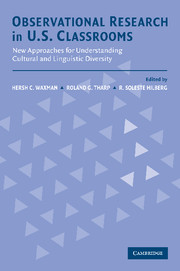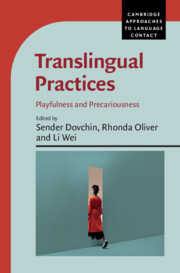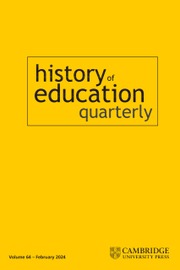Teaching for Linguistic Diversity in Schools
Teaching for Linguistic Diversity in Schools: Student Wellbeing and Achievement explores the linguistic landscape of Australia, including English, Indigenous languages, community languages and school-taught modern languages, to help teachers recognise the extent of children's language knowledge and to reflect on its implications for the classroom. The book explores the significant links between languages, wellbeing and academic achievement in students and offers readers practical suggestions for how to utilise linguistic diversity as an educational resource. The authors' conversational writing style engages both pre-service and practising teachers, helping them understand concepts they may not have previously encountered, while the case studies and stories from practising educators, students and parents bridge the gap between theory and practice. Each chapter includes reflection questions, creative activities and discussion questions to scaffold learning. The integrated online resources contain links to useful websites, further readings and videos to encourage independent exploration.
- Aimed at both Primary and Secondary educators and Education students
- Real-world examples from the classroom and links to the Australian curriculum
- Includes case studies, reflections, end-of-chapter questions and useful weblinks throughout each chapter
Reviews & endorsements
'A must-have resource for teachers to deeply understand the important role that language can play in original and impactful educational methods and creating inclusive, dynamic learning environments. Offering real world examples, this book offers transformative teaching strategies that are exciting in their innovation.' Larissa Behrendt, Distinguished Professor and Laureate Fellow, Jumbunna Institute, University of Technology, Sydney
'Australian classrooms have always been characterised by linguistic and cultural diversity, although the extent to which our multilingual complexity is understood and used to inform pedagogy has been largely an individual, rather than systematic pursuit. The authors and contributors of the current volume have undertaken an admirable journey to map out Australia’s multilingual realities and capture best practice around the country. And as expected, when it is done right, student learning is enriched, and a sense of belonging is afforded to all. This is an essential read for every educator, particularly those who are about to enter the classroom or have ever wondered what it is that we can do better, to harness the diversity in our schools.' Stanley Wang, Deputy Principal, One School, Haileybury
'The word ‘book’ seems inadequate to describe Teaching for Linguistic Diversity in Schools: Student wellbeing and achievement. The readings and exercises, the scholarship and evidence, the multiple-perspectives, and online links, provide evidence and argument, but also strategies, concepts, reflections and activities. There is an entire panorama of play, poetry, and prose. This rich content for teacher educators, teachers, and principals will help bolster student wellbeing and achievement and community cohesion and understanding. Editors and authors set a new standard for creative and constructive responses to challenges posed by inevitable and increasing pluralism in schools and communities. This is an immense resource for strategy, understanding and practice, a rare volume that performs what it promises.' Joseph Lo Bianco, Professor Emeritus, Language and Literacy Education, University of Melbourne
'Teaching for Linguistic Diversity in Schools: Student Wellbeing and Achievement is an engaging, interactive textbook presented in a format that will appeal to educators, teachers and parents from across the learning spectrum. Evidence-based learning has shown that a linguistically rich culture enhances children’s learning of literacy and with practical examples and case studies this textbook will be an asset to student well-being and achievement.' Mary Ryan, Executive Dean, Faculty of Education and Arts, Australian Catholic University, President of the NSW Council of Deans of Education and Chair of the AISNSW Education Research Council
'Teaching for Linguistic Diversity in Schools: Student Wellbeing and Achievement is a must-read for K-12 educators who believe in the power of embracing diversity in the classroom. This interactive book highlights the importance of recognizing and celebrating students' linguistic and cultural backgrounds. By allowing students' cultures and languages to be seen as norms, educators can cultivate a sense of belonging and self-esteem among their students, ultimately creating classrooms where every learner thrives. This book is an invaluable resource for educators committed to creating inclusive and empowering learning environments.' Sana Zreika, Principal, Secondary College of Languages, New South Wales
'In my work as an Education Officer for Hunter Community Languages and the NSW Community Languages Schools Program, I visit at least 40 community language schools each year. I witness firsthand the extraordinary efforts young Australians are investing in learning their heritage languages. Most of these classes take place in public school classrooms, after school or on the weekend, and I always wonder at the juxtaposition of this dynamic linguistic after-hours classroom life, set within classrooms that look as monolingual as they did in the 1970s. Why don't these school walls reflect the linguistic diversity in the student population when it is such a valuable and important part of who these students are? I am thrilled that with this important book, teachers now have a guide for how to acknowledge, embrace, and integrate the rich linguistic knowledge and insights students bring to school every day, creating a more inclusive and representative environment that supports everyone’s wellbeing.' Kara Matheson, Program Education Officer, NSW Community Languages Schools Program and Executive Officer, Hunter Community Languages
'As a primary teacher with 9 years of experience, studying a Master of Education (TESOL), I believe that this book is the beginning of the answer to the education and perception of multilingual students. Crucial to the global movement regarding multilingual worlds is the positive attitude towards individuals' linguistic diversity as an untapped resource for education and for life. Adopting a strength-based approach, this book advocates for language-aware teachers and school communities who actively reject racism in the celebration of the entirety of individual's linguistic repertoires and promote critical thinking in all students. The inclusion of principles and explicit strategies empowers educational stakeholders to embody these for the benefit of students' well-being and achievement. Additionally, through the regular inclusion of self-reflection fostering emotive cognitive self-awareness, readers are motivated to engage with the book's content. Furthermore, this book is backed by research, theories and contextual emic data and provides explicit links to initiatives by educational and health authorities. Through the emphasis on strategies and empathy, this book serves as a key resource that should be a part of every teacher's toolkit.' Cassandra Polden, Primary School Teacher
Product details
October 2024Adobe eBook Reader
9781009374989
0 pages
This ISBN is for an eBook version which is distributed on our behalf by a third party.
Table of Contents
- Part I. Why Does Linguistic Diversity Matter?:
- 1. The multilingual world of you and your students
- 2. Why harnessing linguistic diversity matters to student wellbeing and achievement: Part II. Who Speaks What?:
- 3. Aboriginal and Torres Strait Islander students, families, communities, and languages Susan Poetsch, Denise Angelo and Rhonda Anjilkurri Radley
- 4. Immigrant community languages and additional languages
- 5. Supporting English language achievement for all learners
- Part III. Teaching in the Linguistically Diverse Classroom:
- 6. Teaching in the linguistically diverse classroom: Mathematics, The Arts and English
- 7. Teaching in the linguistically diverse classroom: Humanities and Social Sciences (HASS), Health and Physical Education, Science, Technologies and Languages
- Part IV. Beyond the Classroom and into the Future:
- 8. Building a linguistically diverse school culture
- 9. The future is linguistically diverse
- 10. It's just the beginning.






